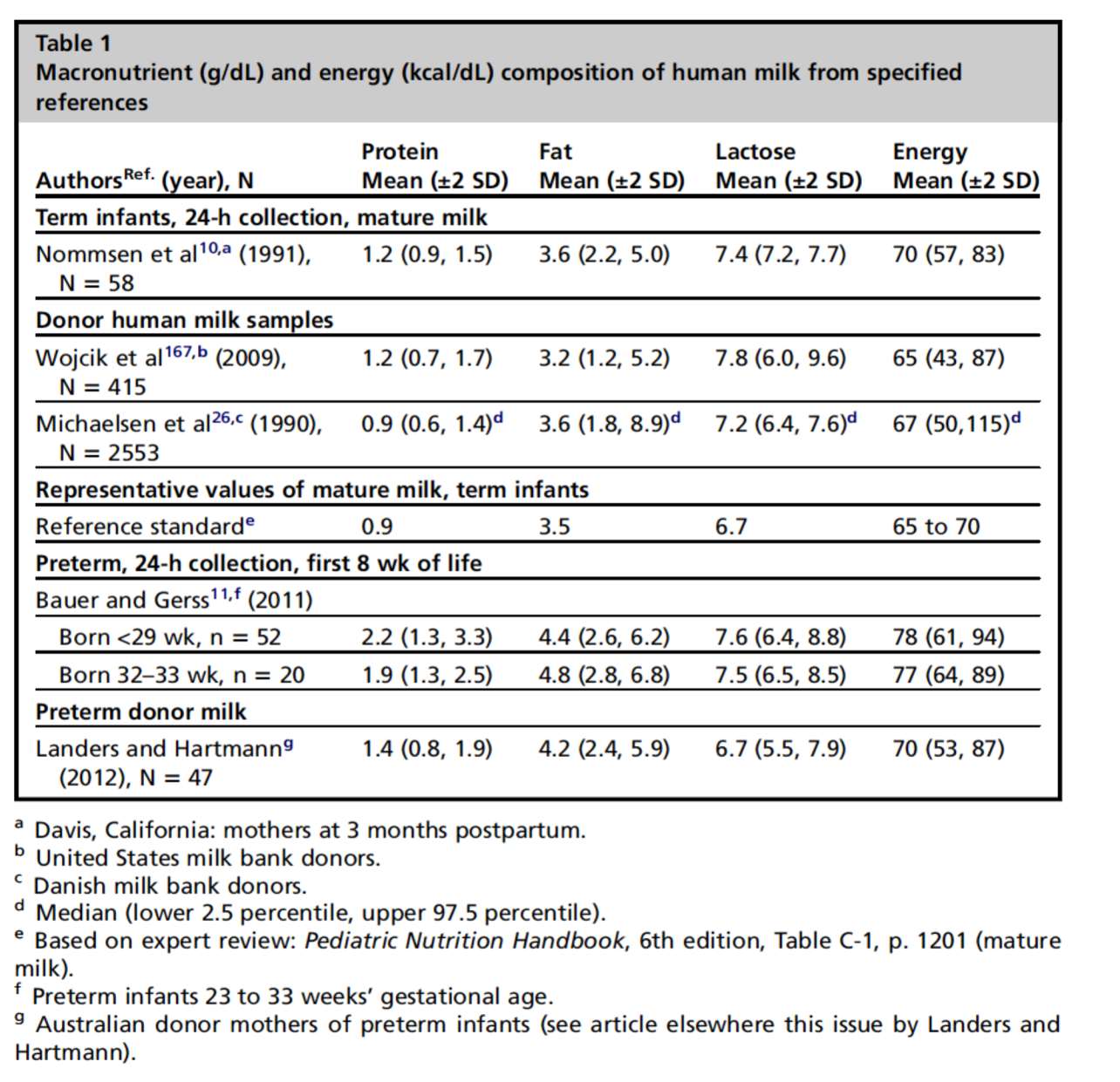母乳中的脂肪,主要為棕櫚酸(palmitic acid)及油酸(oleic acid)。 在所有主要營養素中,脂肪的成份在母乳中改變最大。在哺餵後段的奶稱為後段奶(hindmilk)。它們的乳脂濃度比哺餵初期的乳汁 ,又稱為初段奶(foremilk)高出兩至三倍[8]。
母乳中的脂肪酸成份,特別是長鏈多元不飽和脂肪酸(LCPUFAs),取決於母親的飲食習慣。西方飲食文化偏向於攝取ω-6脂肪酸(omeag-6 fatty acids),而吸收ω-3脂肪酸(omeag-3 fatty acids)的機會則較少。二十二碳六烯酸(DHA)在北美人口的母乳中特別偏低[9],[10],[11]。
[1] Nommsen LA, Lovelady CA, Heinig MJ, et al. Determinants of energy, protein, lipid, and lactose concentrations in human milk during the first 12 mo of lactation: the DARLING Study. Am J Clin Nutr 1991;53(2):457–65.
[2] Liao Y, Alvarado R, Phinney B, et al. Proteomic characterization of human milk whey proteins during a twelve-month lactation period. J Proteome Res 2011; 10(4):1746–54.
[3] Gao X, McMahon RJ, Woo JG, et al. Temporal changes in milk proteomes reveal developing milk functions. J Proteome Res 2012;11(7):3897–907.
[4] Lonnerdal B. Human milk proteins: key components for the biological activity of human milk. Adv Exp Med Biol 2004;554:11–25.
[5] Jensen RG. Handbook of milk composition. San Diego (CA): Academic Press, Inc; 1995.
[6] Bauer J, Gerss J. Longitudinal analysis of macronutrients and minerals in human milk produced by mothers of preterm infants. Clin Nutr 2011;30(2):215–20.
[7] Nommsen LA, Lovelady CA, Heinig MJ, et al. Determinants of energy, protein, lipid, and lactose concentrations in human milk during the first 12 mo of lactation: the DARLING Study. Am J Clin Nutr 1991;53(2):457–65.
[8] Saarela T, Kokkonen J, Koivisto M. Macronutrient and energy contents of human milk fractions during the first six months of lactation. Acta Paediatr 2005;94(9): 1176–81.
[9] Valentine CJ, Morrow G, Fernandez S, et al. Docosahexaenoic acid and amino acid contents in pasteurized donor milk are low for preterm infants. J Pediatr 2010;157(6):906–10.
[11] Martin MA, Lassek WD, Gaulin SJ, et al. Fatty acid composition in the mature milk of Bolivian forager-horticulturalists: controlled comparisons with a US sample. Matern Child Nutr 2012;8(3):404–18.
[12] Dawodu A, Zalla L, Woo JG, et al. Heightened attention to supplementation is needed to improve the vitamin D status of breastfeeding mothers and infants when sunshine exposure is restricted. Matern Child Nutr 2012.
http://dx.doi.org/10.1111/j.1740-8709.2012.00422.x.
[13] American Academy of Pediatrics. Pediatric nutrition handbook. 6th edition. Elk Gove Village (IL): American Academy of Pediatrics; 2009.





